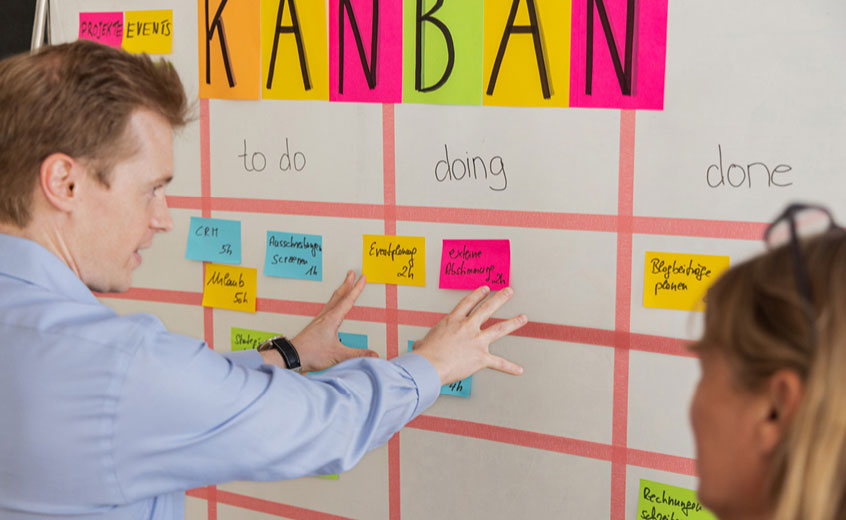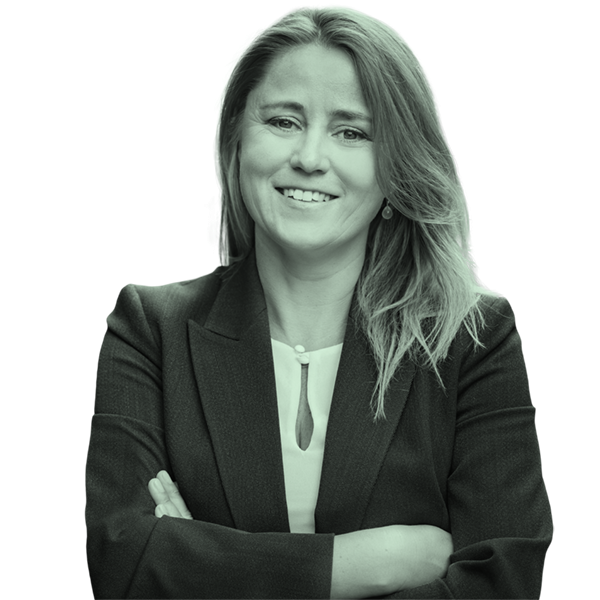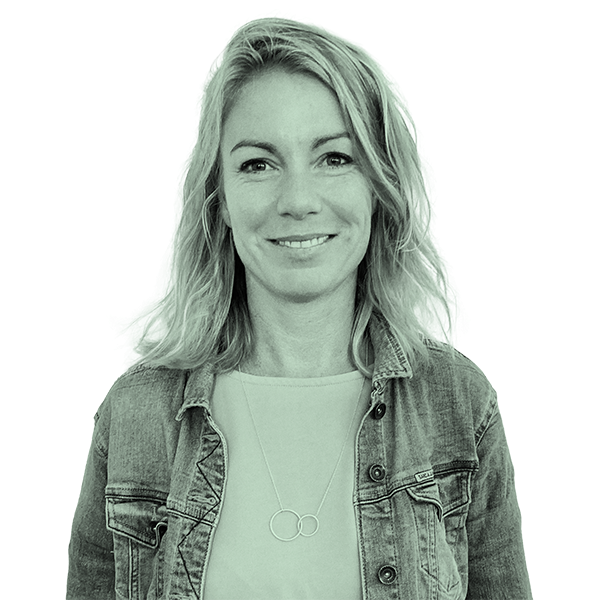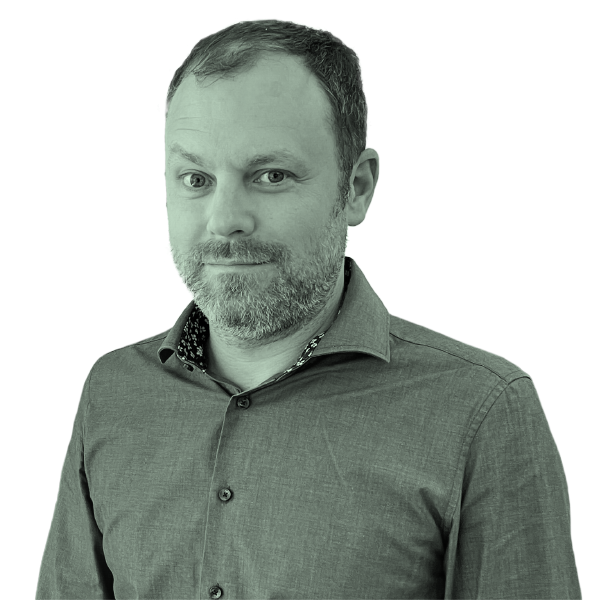Agile transformation in the company: This is how it works!

Agile companies are able to respond flexibly to the challenges of the modern workplace and proactively to the needs of their customers. But how does the journey from rigid structures to an agile way of working work? We show how agile transformation can be successful at all levels of an organization by following HR Director Claudia on her miraculous journey to agility.
Content
What is agile transformation?
Agile transformation means that a company or organization creates the conditions to remain agile and competitive in a constantly changing working world. Similar to Future(s) Thinking, it is about being able to recognize signals of change in good time, classify them correctly and implement them quickly. Agile transformation is a change process that affects all levels of a company and the entire organization.
What many people don’t know: It happens again and again that agile transformation in companies and organizations gets stuck in its infancy.
This is because agility is not limited to agile methods, tools and strategies. For a sustainable transformation process, it is necessary to establish a culture in which agile work can be lived. In addition to a skillset and a toolset, a successful agile transformation therefore primarily requires an agile mindset.

Claudia’s agile transformation – All good, BUT …?

Claudia is 43 and a sci-fi fan. She is also the HR director of a 4,000-strong company in the manufacturing industry. She likes her job, but has long had the feeling that something isn’t quite right. Recently, more and more orders have been slipping through their fingers, while the competition is happily launching new products on the market. Annoyed calls are piling up in support and the last employee satisfaction survey was rather mediocre.
Employees feel slowed down and restricted. Good ideas are discarded because adapting the processes would take too long. They don’t feel that they can contribute their expertise and therefore don’t feel responsible when the company is in the red.
Claudia knows that she has to act. But how can she manage to motivate her employees and keep her customers happy at the same time?
Agility creates space for change
Companies and organizations of all sizes are currently operating under enormous pressure. They have less and less time and resources available to keep up with increasing competition and exponential technological progress. At the same time, pressure is building up internally: Employees are demanding a better work-life balance, remote working and efficient time management are becoming a matter of course.
In the attempt to adapt processes to the new status quo, proximity to the customer suffers in many cases: Changing needs and increased demands are often only noticed when they are reflected in black and white in the business figures.
Things the CEO can learn from Darwin
Many organizations invest in consulting and hire new employees to make structures and processes that have not worked for a long time more efficient.
The Darwinian equivalent of this approach is the original giraffe with the short neck, which one day realizes that there is no longer enough food on the ground: Instead of stretching its neck to reach the juicy greens on the trees, the primal giraffe goes to real lengths to graze more efficiently.
It covers longer distances, makes sure it catches every blade of grass, no matter how scrawny, and conserves its energy so that the little food it finds lasts longer. In other words, it adapts to the changed conditions. But it does not adapt. We all know how the story ended for the short-necked giraffe.
Claudia’s agile transformation – I want to, BUT …

Claudia knows that the reality in her company right now is a complete failure to meet customer demands. Requests are not being processed quickly enough, decisions are taking too long, and key processes are too dependent on individual employees. But how can she build a bridge between the high demands of her target group and Jochen, the department manager, whose chronic migraine paralyzes the entire process chain every second Tuesday?
- respond more quickly and efficiently to market changes.
- have more confidence in the work and decisions of your people.
- reduce hierarchies and give more responsibility to qualified employees.
- offer employees better prospects and development opportunities.
- identify when customer needs are changing.
- improve the way the company communicates.
- bring new products to market faster.
- implement innovations before the competition.
- increase company sales.
After a quick Google search, Claudia realizes that what the company lacks is agility. But becoming an agile company seems like a huge undertaking. And she doesn’t know how to go about it, or how her employees, especially Jochen, will react to the changes.
Agile transformation needs change management
With agility, we use the principle that has propelled humans to the top of the evolutionary ladder: Adapting to ever-changing conditions.
It puts companies and organizations in a state of continuous course correction – WITHOUT disrupting processes for employees and/or customers. For this project to succeed, the right conditions must first be created: The company must undergo an agile transformation.
As agile transformation, just like digital transformation, is an extensive change process, it is important that companies secure professional support.
Agile transformation experts manage change at all key levels, taking into account not only structure and process, but also culture. Commitment is needed at all levels for agile to become the new norm: Benjamin, a first-year apprentice, needs to be on board just as much as the CEO.

From “top down” to agile leadership
Change management in an agile transformation requires a special focus on leaders. Not because top management hired the consultant, but because it is important that the mindset change starts where the mindset has the greatest impact (positive and negative).
Because leadership in many companies and organizations is still top-down, based on authority rather than personal responsibility, top management often has to “unlearn” the old to make room for the new. Only when leadership can be rethought at the top can agile transformation really begin.
Claudia’s agile transformation: objectives and doubts
Claudia and her team have been working with external consultants for several weeks now, who will accompany the agile transformation in her company. Once the consultants have carried out a thorough analysis of the current situation, the next step is to prepare for the transformation itself. In this phase, the experts work with Claudia and the stakeholders to develop
- a vision of the company’s future agile organization,
- formulate their ideal target state and
- define the scope of the changes to be implemented.
For Claudia and her management team, one thing is clear: they want this change. However, Claudia finds it difficult to commit to something that has no fixed structure or defined strategy. The consultants keep telling her that agility is about empowering people in the organization to be agile. But what does that mean?
What does agile transformation want to achieve?
Organizations and companies that have undergone an agile transformation are generally characterized by flat hierarchies, a good communication and feedback culture, absolute transparency, and a high degree of personal responsibility on the part of employees. In agile companies, there is a willingness to experiment, and mistakes are not swept under the rug, but used to continuously improve processes.
Instead of individual departments that receive their work assignments from top management, companies often organize themselves into smaller, autonomous teams (also known as “agile teams”).
As a result, they are able to respond more quickly to changing needs and make timely decisions. The high degree of personal responsibility fosters intrinsic motivation: employees do not work to be told what to do, but rather take advantage of the opportunity to grow with the company.
This is also the reason why innovation management thrives best in agile structures and why many agile organizations show great potential in the area of intrapreneurship.
The link between the long-term strategic goals of the organization and the personal development of employees is one of the defining characteristics of agile transformation: teams that are intrinsically motivated and loyal to the organization are better able to embrace change.
Organization from outside to inside
After an agile transformation, companies are closer to their customers than ever before. Shorter decision paths and flexible processes create the conditions for the “outside” to determine the “inside.
Instead of setting strategic goals once a year and communicating them “down the line,” often independent of real customer needs, short- and medium-term goals emerge from interaction with customers, suppliers, and stakeholders. Agile transformation therefore also influences strategy development and creates the basis for important methods in the context of organizational development (e.g. design thinking or future thinking).
Agile Leadership
In agile companies and organizations, there is no room for managers who lead with pressure. As agility largely depends on the intrinsic motivation of employees, managers need to encourage independent thinking and action.
Instead of fearing change, agile managers respond to challenges with creativity and a spirit of innovation. Many organizations that want to become (more) agile choose OKR (Objectives and Key Results) as their leadership and target management framework.
Roadmap for agile transformation
Agile transformation is an iterative process. This means that the entire structure is not thrown overboard and the agile structure is “put on,” but rather the change takes place step by step, and each step goes through three or four phases, depending on the model. One model that can be used to illustrate the phases is the PDCA cycle.
The model was developed by the American physicist William Edwards Deming and describes the four essential steps for optimizing quality management:

These are the phases that the company or organization goes through at each individual step on the path to agility:
Plan:
The respective transformation step is planned and prepared after extensive analysis.
Do:
The agreed measures will be implemented.
Check:
The implemented measures are evaluated and the results/successful changes are assessed.
Action:
The “new standard” is anchored and continuously optimized.
Claudia’s agile transformation: losing out?

The consultants Claudia works with have already prepared her and her team for the fact that the upcoming changes will not be met with enthusiasm by all employees. They talked about the “5 stages of grief. Claudia thought this was a bit exaggerated, but at the staff meeting she was dismayed to see how many employees reacted to the announcement of the change. Jochen, in particular, looks like he is planning a mutiny.
To absorb the negative emotions, Claudia’s consultants set up a comprehensive support system with supervision, group and individual coaching sessions. They repeatedly reassure Claudia that anger and rejection are normal reactions.
Claudia wants to talk to the people in her company. She wants to understand where the fears are coming from. At the same time, she remains firm in her decision: she WANTS the agile transformation. But she also wants to give her employees a perspective: What’s next?
What will replace the structures to which the company is accustomed? What tools and skills will the consultants give her team to make the transformation a success?
Agile methods and tools
Agility is based on a set of values and principles that form the guiding principles of action. Certain techniques, also known as tools, have been developed to translate the more abstract values and principles into concrete agile work. The agile methods in turn give the techniques or tools an overall structure, a kind of framework within which agile teams can organize themselves and plan their projects.
Many of the agile methodologies used in various industries today originated in software development. This is no coincidence, as the Agile Manifesto, which outlines the principles of agility, originated in software development. As a result, the agile project management methods SCRUM and KANBAN have been applied more and more outside of IT projects.
Agile methods are also increasingly used outside of project management, such as design thinking in the development of new products and services, or OKRs in the area of goal management. Agility can also be effective in strategy work (agile strategy development) and in change management (agile change management).
In principle, agile methods can be adapted to specific project requirements. However, it is important that the team knows the respective method very well and can assess whether the output justifies the adaptation.
Claudia’s agile transformation: the toolbox

Claudia’s employees are now in phase 4 of their grieving process: trial and discovery. Even Jochen is cautiously putting out feelers to find out more about his role in the new structure. The agile tools and techniques introduced by the consultants have been well received by most.
Many now realize that the new techniques bring not only more flexibility, but also much more personal responsibility to their project management. People who used to work by the book are suddenly re-engaged. Others surprise with innovative ideas because they finally feel heard. Some of the tools/techniques that Claudia’s staff already enjoy working with include
- Daily Standups help everyone to compare their individual goals with the status quo.
- Task Boards in conjunction with SCRUM visualize the progress of the project wonderfully and ensure that nothing is overlooked.
- Timeboxing ensures that the “momentum” is not lost and the project comes to a standstill at some point.
- Use Cases help you to put on the “customer glasses” and ensure that the project does not bypass the customer’s needs.
Trainings & coaches for agile transformation
For a company or organization to become agile, it needs one thing above all else: time. An agile mindset does not develop overnight. It is therefore important that the transformation is not only driven by external consultants, but that there are stakeholders within the company/organization itself. Typically, these are project managers and process owners who ensure that the transformation process does not grind to a halt. They keep the transformation energy alive.
The stakeholders of the agile transformation in the company/organization should be educated and trained for this task. Training as an agile coach or OKR master enables selected employees
- to introduce their colleagues to agile principles and methods.
- identify and address barriers to agile work.
- support management in implementing agile transformation.
- provide methodological and consulting support for the development of agile teams.
- manage conflict and bring together different perspectives through mediation.
- identify other stakeholders (e.g., influential individuals) and win them over to the agile cause.
Claudia’s agile transformation: The new norm

It has been two years since Claudia and her team embarked on their journey to agility. The transformation process is not yet 100% complete, but the measures implemented are already firmly anchored in everyday work, and the consultants who accompanied the process are increasingly able to step back.
The biggest business success is a drastically reduced time-to-market: Claudia’s company is finally working efficiently and close to its customers again. In addition to rising sales, the boss is particularly pleased with the atmosphere that now prevails in the company. Employees take the company’s success personally and are motivated to achieve their goals: Work is a lot more fun now!
Claudia is no longer nervous about major competitors and innovation leaps: she knows the company will adapt. And new Agile Coach Jochen will make sure that the energy behind the transformation continues.
Agile transformation with Wonderwerk

Wonderwerk Consulting is one of Austria’s pioneers in the holistic approach to agility. We have been successfully supporting agile transformations in companies and organizations of all sizes for many years and provide the necessary outside perspective. As specialists in the process behind change, we not only have a theoretical understanding of how the change process toward agility works, but we also know all the practical hurdles that can stand in the way of sustainable change.
We don’t want to establish agility as a parallel structure in your company/organization, but rather guide you toward a long-term transformation toward agility and accompany you on your journey. With agile consulting, we help you
- achieve faster development cycles.
- align your processes and workflows with customer value.
- identify trends and leverage them economically.
- help your employees realize their full potential.
- see new ideas not as a threat, but as an opportunity.
- reorganize your processes independently of individual employees.
Rethinking important areas of the company
Agility touches all essential areas of your company/organization. That is why it is not only our job to train you and your employees in agile methods such as SCRUM, design thinking, and Kanban, but we also help you to apply these methods in various contexts (for example, in your strategy work, in trend, and innovation management).
Agile Success Story Merkur Versicherung
One of our success stories is the agile transformation of Austria’s oldest insurance company, Merkur AG. We support Merkur Versicherung AG in creating a corporate and leadership culture that is characterized by agility, implementation strength, and personal responsibility. Read the full success story here.
Why Wonderwerk?
Because we think beyond the initial change. Our consultants’ work does not end when the individual transformation steps are implemented. Only when the agile mindset has become the new norm in your organization have we achieved our goal.
Contact
Anna-Maria Hausdorf
anna-maria.hausdorf@wonderwerk.com
Book a free consultation now!
Our Agile Methods Training Courses

Agile Coach

Agile Strategiearbeit

Agile methods

Trendmanagement








